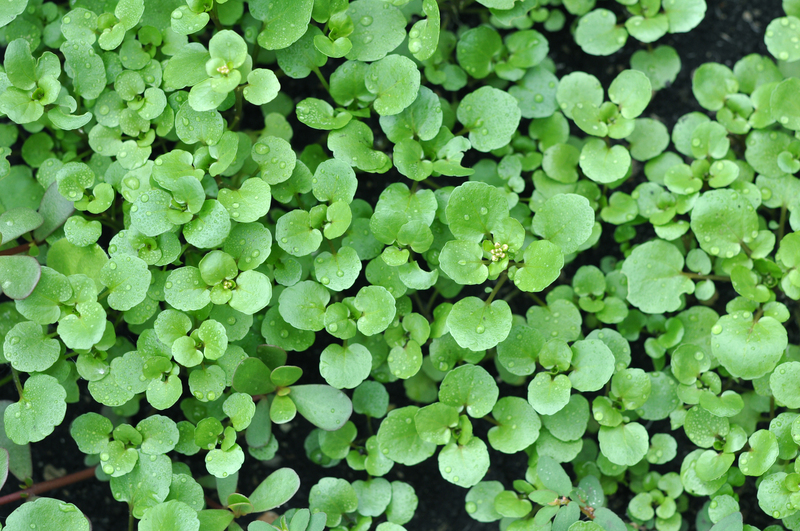Step-by-Step Instructions for Tree Stump Removal
Removing a tree stump from your yard can be a daunting task, but with the right approach and some determination, you can reclaim your landscape and create a clean, safe, and beautiful outdoor space. Whether you've recently cut down an unwanted tree or inherited a yard littered with old stumps, this comprehensive guide provides a detailed, step-by-step process for tree stump removal. Explore effective stump removal methods, important safety considerations, and valuable tips for a successful DIY project.

Why Remove a Tree Stump?
There are several compelling reasons to remove tree stumps from your property:
- Safety: Stumps can be tripping hazards, especially for children and the elderly.
- Pest Prevention: Old stumps can attract insects such as termites, beetles, and ants.
- Appearance: Stumps can make your yard look unkempt and lower curb appeal.
- Property Maintenance: Stumps can interfere with lawn care and damage mower blades.
- Regrowth: Some trees may sprout new shoots from the stump, leading to unwanted regrowth.
Essential Tools and Safety Gear for Tree Stump Removal
Before you begin, it's crucial to gather the right tools and safety equipment. Depending on the method you choose, your checklist might include:
- Protective work gloves and safety goggles
- Steel-toe boots
- Shovel and mattock
- Pruning saw or chainsaw
- Pickaxe or digging bar
- Stump grinder (rental for large stumps)
- Drill with large bit
- Chemical stump remover (optional)
- Garden hose or buckets of water
- Wheelbarrow for debris
Always use protective gear when working with heavy equipment or sharp tools!
Choosing the Best Stump Removal Method
Several tree stump removal methods are available, each with its benefits and considerations. The best choice depends on the stump size, tree species, time frame, and resources. Before you start, consider the pros and cons of each method:
Manual Stump Removal
Ideal for small to medium stumps or those with shallow roots. This method is labor-intensive but often effective for DIYers.
Chemical Stump Removal
This stump removal technique involves using chemicals to accelerate the decomposition of the wood. It's less physically demanding but takes weeks or even months.
Mechanical Stump Grinding
Renting a stump grinder is the most efficient way to remove large stumps. This machine chips the wood into mulch, often within an hour.
Burning the Stump
In areas where it's legal and safe, burning can quickly eliminate a stump. Check local regulations and fire codes before considering this approach.
Manual Tree Stump Removal: Step-by-Step Guide
Manual removal is perfect for smaller stumps and those willing to put in some elbow grease. Here's a complete breakdown:
Step 1: Clear the Area
- Remove rocks, branches, and debris around the stump.
- Trim any remaining roots, shoots, or suckers with pruning shears or a saw.
A clean work area enhances safety and provides clear access to the root system.
Step 2: Dig Around the Stump
- Use a shovel to dig a trench around the base of the stump.
- Expose as many major roots as possible, digging at least 1-2 feet outward from the trunk.
Tip: Wetting the soil can make digging much easier, especially in hard or clay-heavy ground.
Step 3: Expose & Cut the Roots
- As you find roots, use a handsaw, axe, or loppers to cut through them.
- Cut as close to the stump as you can.
- Try to wiggle and pull each root out with a pry bar or the digging fork.
*The more roots you cut, the easier the stump will be to remove.*
Step 4: Loosen and Remove the Stump
- After most roots are severed, rock the stump back and forth with your hands or a lever.
- Insert the shovel or pry bar beneath the stump to lift and loosen it further.
- Continue trimming any stubborn remaining roots until you can lift the stump free.
Step 5: Fill the Hole
- Clear remaining root debris and level the hole.
- Return soil into the hole, tamping down to minimize settling.
- Optionally, add compost and topsoil to improve fertility for grass or plantings.
Manual tree stump removal is tough work but provides a sense of accomplishment and doesn't require expensive rentals.
Chemical Stump Removal: A Less Labor-Intensive Option
For those looking for a less physically demanding solution, chemical stump removers can break down the wood over time.
Step-by-Step Chemical Stump Removal
-
Read Product Instructions:
Carefully review the manufacturer's guidelines and warnings. -
Drill Holes:
Use a drill with a large bit (about 1 inch in diameter) to make deep holes into the top and sides of the stump. Space them a few inches apart. -
Apply Chemical Remover:
Pour the product into each hole. Most stump removers contain potassium nitrate to facilitate decay. -
Add Water:
Fill each hole with water to help the chemicals penetrate the wood fibers. -
Wait:
Allow the chemical remover to work, which can take several weeks to several months. -
Break Apart Stump:
As the stump softens and rots, break it apart with an axe, shovel, or sledgehammer. -
Dispose and Fill In:
Remove crumbled wood, dispose of debris, and fill the hole as described previously.
Important: Keep children and pets away from treated stumps, and check that rain won't wash chemicals into nearby gardens or waterways.
Stump Grinding: Fast and Efficient Stump Removal
For large or stubborn stumps, grinding removes tree stumps quickly. Most homeowners rent a stump grinder from a local hardware store or garden center.
Step-by-Step Stump Grinding Instructions
-
Read Equipment Manual:
Stump grinders are powerful. Review all safety warnings and operating instructions. -
Wear Safety Gear:
Use goggles, gloves, ear protection, long sleeves, and pants. -
Prepare the Stump:
Cut the stump as close to ground level as possible using a chainsaw. -
Position the Grinder:
Move the grinder next to the stump; ensure stability on flat ground. -
Grind the Stump:
Start the grinder and lower the wheel onto the stump, moving it slowly from side to side. -
Grind Below Ground Level:
Continue grinding until the stump is 4-6 inches below the soil surface. -
Clear Debris:
Remove chips and fill the hole with soil or mulch.
*Stump grinding is the most efficient tree stump removal technique for large, mature trees.*
Burning a Tree Stump: When and How
*Burning* is sometimes used in rural or unpopulated areas but always check local regulations first. Never burn stumps in dry, hot, or windy conditions.
How to Burn a Stump Safely
- Check that open burning of stumps is legal in your jurisdiction.
- Drill deep holes into the top to act as chimneys.
- Fill holes with potassium nitrate to accelerate burning.
- Cover the stump with scrap wood, then light the fire and monitor closely.
- Keep water and a shovel nearby for emergencies.
- After burning, clear out the ashes and fill the hole.
Note: Burning can release pollutants. Use this method only if you cannot use the alternatives above, and always take extreme safety precautions.
Natural Decay: Letting Nature Take Its Course
If you are not in a rush, you may allow stumps to decompose naturally. Speed up the process by drilling holes to expose the inner wood and keeping the stump moist. Covering with soil and compost helps, but full decay may take several years.
Tips for Successful Tree Stump Removal
- Assess Stump Size: Choose an appropriate removal technique for the stump's dimensions and location.
- Beware of Utilities: Before digging, always verify that no electrical, gas, or water lines run under the stump.
- Work in Dry Weather: Dry conditions improve traction and make digging safer.
- Call Pros for Big Jobs: Massive or difficult stumps might be best handled by professional stump removal services.
- Use Mulch or Topsoil: Fill holes with mulch or topsoil to encourage healthy regrowth or landscaping.
Aftercare: What to Do After Removing a Tree Stump
Once you have successfully removed a tree stump from your yard, take care to restore the area:
- Level and compact the soil.
- Add grass seed or sod for a seamless lawn.
- Use the area for gardening, landscaping, or new plantings.
Proper aftercare prevents sinkholes and keeps your yard looking its best.

Frequently Asked Questions About Tree Stump Removal
How long does stump removal take?
Manual or grinding methods can take a few hours, while chemical removal may take weeks to months.
Is it better to grind or remove a stump?
Grinding is faster for large stumps, while removal is suitable for smaller ones or where regrowth is a concern.
What is the cheapest way to remove a stump?
Manual digging is the most cost-effective, but chemical or household solutions can be cheap alternatives for patient homeowners. Renting equipment increases cost but saves time.
Can I plant a tree in the same spot?
Yes, but wait until all woody material and roots are removed, and enrich the soil to address nutrient depletion.
Conclusion: Choose the Right Tree Stump Removal Method for You
Whether you opt for manual stump removal, chemical methods, grinding, or burning, each approach has its unique advantages. Consider your stump's size, yard conditions, and personal preference before starting. Always prioritize safety, use the proper equipment, and don't hesitate to consult professionals for complex or extensive stump removal projects. With determination and this comprehensive guide, you can take the right steps toward a stump-free, beautiful landscape!



